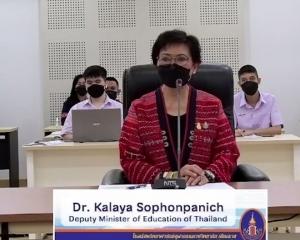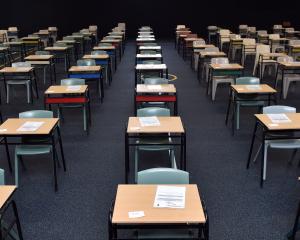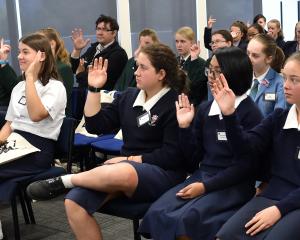Education groups are joining forces from next week in a bid to overturn the Government's revised class ratio funding formula.
Militant teacher unions which could be expected to oppose changes to ratios have taken heart at the rebellion over the funding cuts by parents and traditionally moderate groups.
The principals of the Association of Intermediate and Middle Schooling (NZAIMS) yesterday called on schools to withdraw their support from Ministry of Education initiatives and refused to serve on a working party to implement the changes.
President Gary Sweeney called it more "civil disobedience" than industrial action. But he said in his 20 years or so as a principal, he had not seen such a response to change.
"We cannot continue working with a Government ministry that cannot work in a fair, transparent and honest way with us," he said.
"There is genuine anger from a lot of very senior principals in the system."
Organisations representing teachers, principals and trustees will meet in Wellington next Tuesday to plan joint action against the cuts.
As well as NZAIMS, the meeting will include the Secondary Principals' Association, the New Zealand Principals' Federation and the School Trustees Association. Also represented will be the primary and secondary teacher unions, the New Zealand Educational Institute and the Post Primary Teachers' Association.
Education Minister Hekia Parata faced a large and rowdy demonstration of parents, teachers and children in her home electorate of Mana at a breakfast speech she was giving yesterday.
And pupils in some schools are being urged to lobby Government MPs on the subject.
Ms Parata has already backed away from the initial rejig of ratios.
On Tuesday she assured 245 schools, mainly intermediates which could have lost between two and seven full-time positions, that no school would lose more than two positions over three years.
Asked about what happened after that, she said in Parliament yesterday the policy would be reviewed over that period.
But that has not quelled the opposition. Mr Sweeney, who is the principal of Pukekohe Intermediate, said his association's action was aimed at the Ministry of Education because it was the body schools dealt with daily.
"The ministry has broken a relationship with us. They didn't consult, they just threw a scenario at us, then they threw a solution that they thought was right at us - two teachers instead of four or five - then they throw a working party idea at us.
"We've had enough."
One of the first instances of non-co-operation was to refuse to work with the University of Otago, which was undertaking research into learning at year 4 and year 8 levels on behalf of the ministry.
He knew of three schools which had told the researchers they would not co-operate.
Mr Sweeney said that while the Government had offered an "olive branch" in terms of the two-teacher cap, it threw up a new set of problems such as the unfairness in both a small and large intermediate schools losing two positions.
Having said previously the changes were not fully modelled, Ms Parata yesterday denied the Ministry of Education modelling around the new ratios had been flawed. She told Parliament "the impact of the ratio change was not intended to have an effect to the extreme that we have heard anxieties raised about".
Her spokeswoman denied a speculation the minister's sister, Apryll Parata, a deputy secretary for performance and change at the ministry, had been responsible for the advice on the changes to class ratios.












